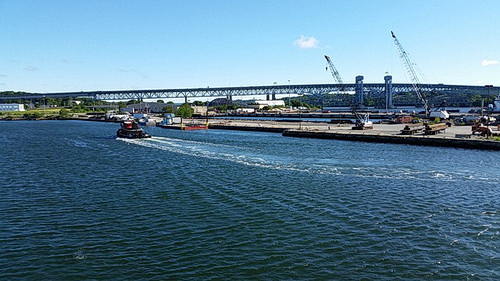
Introduction
Long Island New York is famously known for its beautiful beaches, stunning sunsets, and sparkling blue waters. But with all the talk about water quality, many people are left wondering: Is Long Island water safe to drink? In this blog post, we’ll be taking a closer look at Long Island water and uncovering the facts.
Long Island is home to more than 7.6 million people, making it the most densely populated region in New York State. As a resident of a community, we rely on the water supply for our daily needs. But with so many pollutants entering the water, it’s important to understand the quality of the water and how it affects our health.
Water Quality Overview
The NYSDOH tests the water regularly and issues swimming advisories when necessary. Generally, the water quality is rated as either “good” or “excellent, with few significant contaminants, as stated by NYS officials, but independent studies have shown otherwise.
Those few contaminants mentioned have been identified as fecal coliform bacteria, sodium, nitrates, and chromium. The causes are from a variety of factors, including agricultural runoff, industrial waste, and sewage spills. In addition, ground and surface water may become contaminated with heavy metals and other pollutants due to the natural weathering processes.
These contaminants were said to be found in very low levels and are not considered to be a health risk; however, other studies have found PFAS (per-and poly-fluoroalkyl) in the water, which is known to be harmful to risks such as cancer, liver damage, asthma, and other diseases.
The Long Island-based Citizens Campaign for the Environment has assembled a map showing the areas of contamination for PFAS across Nassau and Suffolk counties.
Whatever the reason for contamination, the fact is it exists, and depending upon who you speak to, the intensity of the contamination will vary.
Long Island Water Sources

The majority of Long Island’s drinking water is acquired from two main sources: surface water and groundwater. Surface water includes rain, streams, and rivers, while groundwater is found in aquifers beneath the ground. Both sources are vulnerable to contamination from environmental pollutants, such as fertilizer runoff, industrial waste, and sewage.
Water Treatment Process
Once the water is sourced from its natural sources, it undergoes a rigorous treatment process. This process is designed to eliminate any potential contaminants and make the water safe for consumption. The water is filtered, disinfected, and tested for a variety of pollutants and contaminants. Depending on the source, additional steps may be taken to make the water safe for drinking.
Conclusion
Long Island water is generally safe to drink, but there are still areas of concern. To ensure that our water is safe and clean, it’s important to understand the sources of contamination, the potential health risks, and the steps we can take to preserve our water supply.
With that said, if you are concerned about drinking water, there are always filters you can buy for your refrigerator or external units to use in your kitchen. Of course, the most popular is to buy bottled water.
We hope this blog post has given you a better understanding of Long Island water and the potential risks associated with drinking it. As always, if you have any questions or concerns about water quality, please contact your local water authority or the New York State Department of Environmental Conservation for more information.